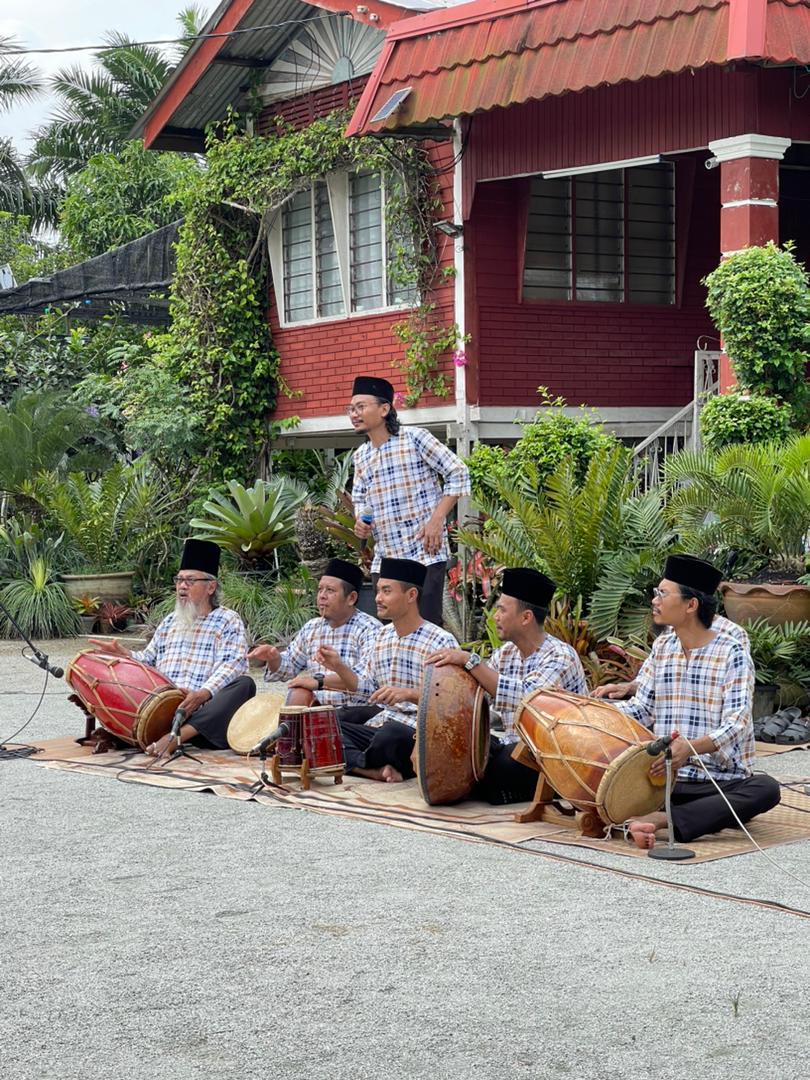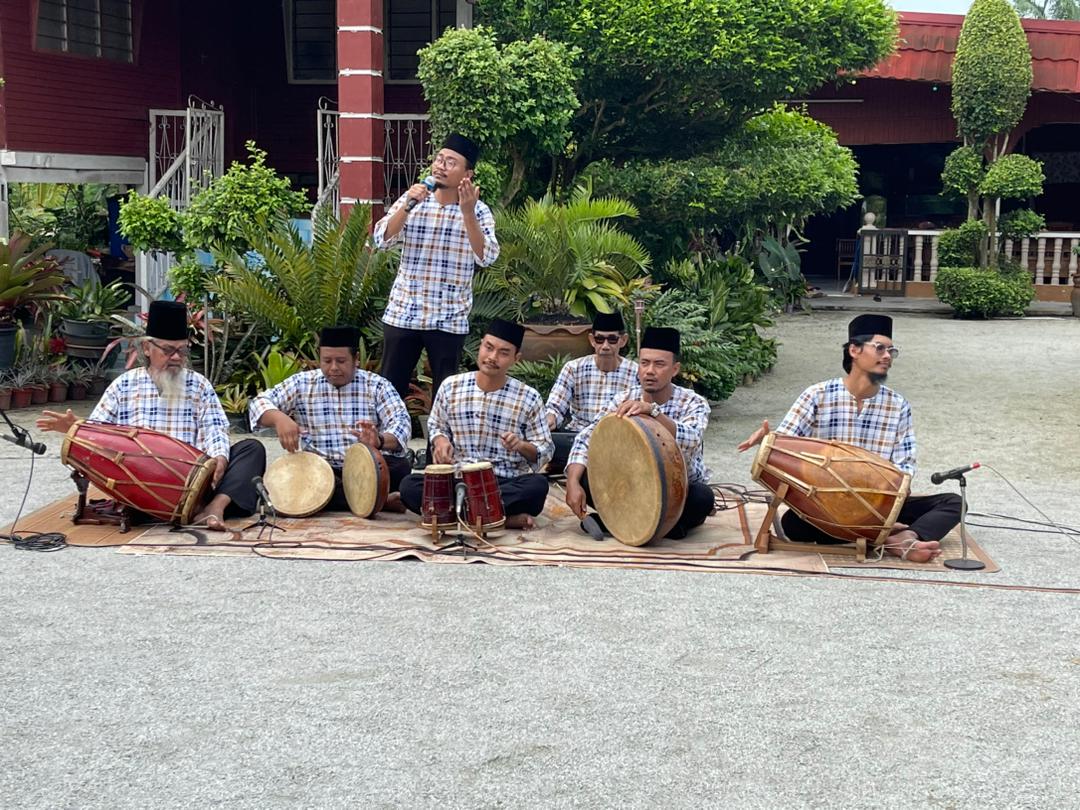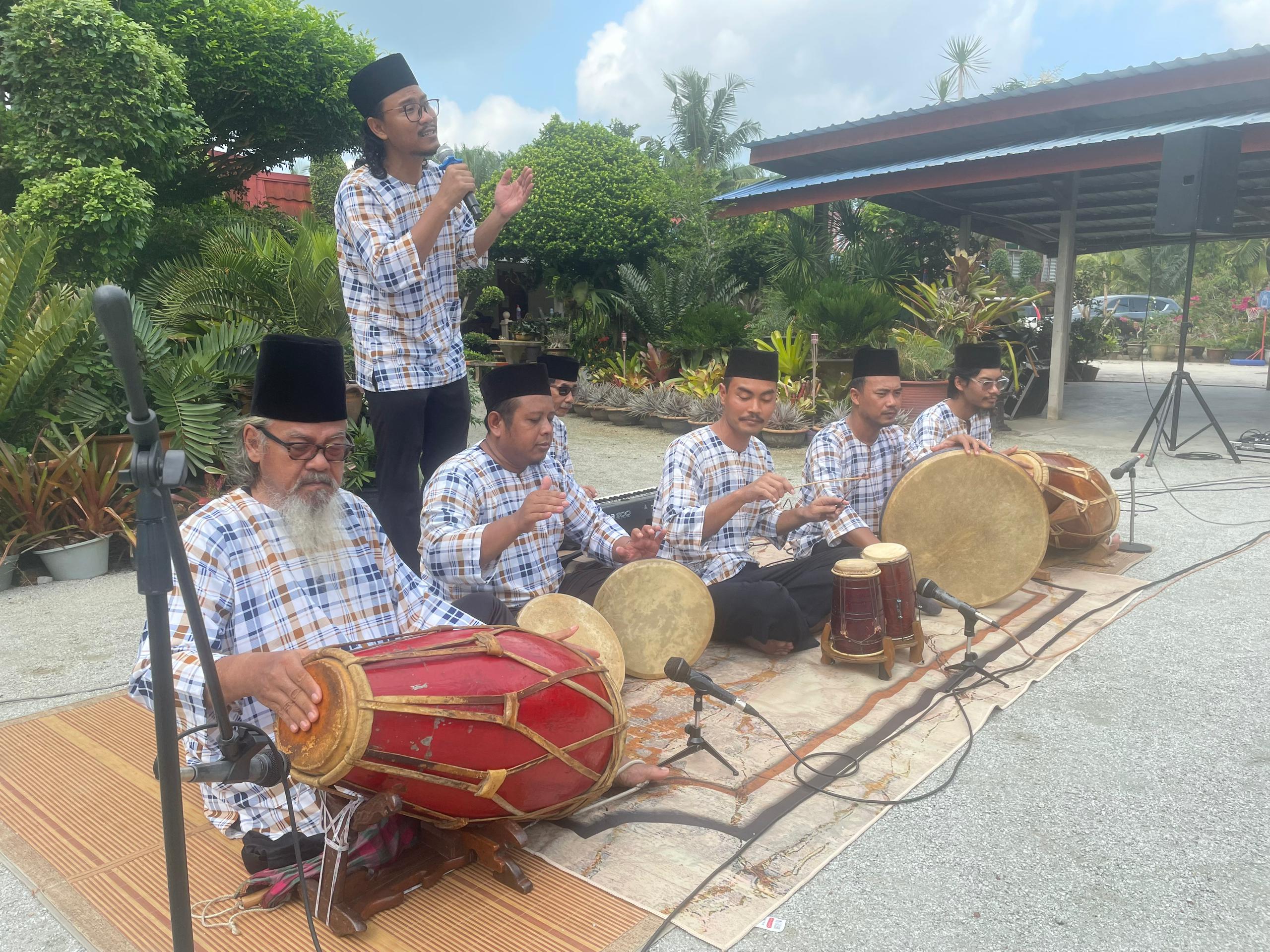ARTS AND CULTURE INFORMATION GATEWAY
Immerse yourself in the colorful world of art and culture! From traditional heritage to contemporary works, discover uniqueness that reflects the nation's identity and identity
CEMPULING
Picture
11
Video
Available
Today's Visitor
2
Number of Visitors
101
Introduction and history
Cempuling is a form of traditional musical art inherited from the Javanese community and was first introduced to the Malay Peninsula in the 19th century. The term “Cempuling” is derived from a combination of Javanese words: “Com-Com” (variety), “Pul-Pul” (gathering), and “Eling-Eling” (remembrance). Collectively, the term conveys the idea of "a group of individuals gathering to remind one another," reflecting the original function of this art form as a medium for disseminating Islamic teachings and moral guidance.
In its early days, Cempuling functioned as a medium for religious outreach, conveying spiritual messages and ethical values through song, music, and oral performance. It was not merely a form of entertainment but also a vehicle for spiritual and social education, accessible to and embraced by the wider public.
In Selangor, particularly among Javanese communities in Banting and Kampung Sungai Pelek, Sepang, Cempuling continues to be preserved as both a marker of cultural identity and an ethnic symbol. It is frequently performed during cultural events such as weddings, communal feasts, and arts festivals, playing a significant role in reinforcing social cohesion and communal unity.
One of the most active groups preserving this tradition isteh group of Cempuling Damar Wulan from Kampung Sungai Pelek, Sepang. The group has achieved notable recognition, securing second place in the Cempuling Festival organized by the Selangor Malay Customs and Heritage Corporation and the State Government of Selangor. They have also been featured on the TV3 program Sembang Nasi Lemak Kopi O and released a widely appreciated advisory-themed single titled Piye Kepriye in the Javanese language.
Since its earliest days, Cempuling has served as a medium for conveying Islamic teachings, moral values, and life advice to the community. The lyrics, sung in Javanese, are rich with reminders and lessons, making Cempuling a form of entertainment imbued with spiritual depth.
Beyond its religious and educational purpose, Cempuling also plays a key role in strengthening familial ties and community unity, particularly among the Javanese communities in Banting and Kampung Sungai Pelek. Cempuling performances offer a space for intergenerational gatherings, foster a spirit of mutual cooperation, and reinforce cultural identity passed down through generations. The tradition is especially prominent during weddings, circumcision ceremonies, newborn celebrations (cukur jambul), thanksgiving feasts (kenduri kesyukuran), and religious or cultural festivals.
With its use of the Javanese language in both singing and narration, Cempuling acts as a living tool for preserving and promoting the language and cultural heritage. It provides younger generations with opportunities to learn about and appreciate the artistic legacy of their ancestors through songs, folklore, and traditional dance. Unlike today’s commercial entertainment, Cempuling offers educational entertainment—often infused with folk tales, light-hearted humor, and social satire, all of which carry moral messages and cultural insights. The gentle humor interwoven into the performances helps deliver meaningful messages in a relaxed yet impactful manner.
In Cempuling performances, the musicians' appearance does more than provide a visual identity for the group—it also reflects the rich cultural heritage of the Javanese community, which values modesty, beauty, and harmony. Musicians typically wear traditional or semi-formal attire, depending on the theme of the performance, the nature of the event, and the venue. Common costumes and accessories include:
Baju Melayu with Samping
A full Baju Melayu outfit paired with a samping and songkok is the primary choice, especially for formal occasions such as weddings or state cultural festivals. This attire exudes elegance and respectability, in line with Malay-Javanese cultural values. The colours are often coordinated with the theme of the performance or the group’s official colour scheme.
Batik Shirt with Songkok
Cempuling features a variety of traditional musical instruments, each contributing a unique sound that defines the texture and rhythm of the performance. Among the main instruments are:
Gendang Sunda
A type of drum made from wood and animal hide, producing deep, rhythmic tones. It serves as the foundation of the basic beat in the performance.
Gendang Agong
A large-sized drum known for its resonant and dramatic sound. It plays a leading role during the climactic moments of songs or performances.
Kempul
The kempul is a small hanging gong struck with a padded mallet. It creates a soothing, wave-like sound and functions as a structural marker in the music, often signaling transitions between segments.
Enteng-Enteng (or Eteng-Eteng)
A small percussion instrument that emits a high-pitched tone when struck. It is used to provide rhythmic decoration and accentuation within the musical arrangement.
Kempreng (if included)
A metallic-sounding percussion instrument, used to support the main rhythm and add a layer of complexity to the overall sound texture.
Keyboard
Provides harmonic background and is sometimes used to replicate the tones of traditional instruments, offering versatility in musical layering.
Electric Guitar
Adds depth and a modern touch to the performance by enhancing the background sound and integrating contemporary elements into the ensemble.
These instruments are played in layered group arrangements, producing a sound that is energetic, resonant, and harmonious. Perfect for accompanying advisory-themed songs and traditional dances. Rather than compromising the authenticity of Cempuling, such adaptations highlight the flexibility of traditional art in navigating the challenges of modernity and technological advancement.
A Cempuling performance is typically presented by a group of six to twelve members, including both musicians and vocalists. Each performance is carefully planned, taking into account song arrangement, choice of instruments, costumes, and audience interaction to ensure the experience is meaningful, entertaining, and culturally rich.
The performance usually begins with a musical introduction, where instruments are played in succession, followed by opening songs with either a light-hearted tone or moral messages. Songs are interspersed with folktales, poetic verses (pantun), humorous skits, or life advice, making the show both didactic and entertaining. A lead singer guides each piece, supported by musicians playing traditional percussion instruments, often enhanced with modern touches such as the keyboard or electric guitar to bring a fresh and contemporary appeal.
In addition to singing, Cempuling also incorporates traditional Javanese dance, particularly in cultural events, weddings, circumcision ceremonies, and newborn blessings (cukur jambul). The gentle, flowing movements of the dance follow the rhythm of the music, visually expressing the meaning of the songs and enriching the atmosphere of the event.
The repertoire spans a wide range of themes, from advisory and satirical songs to folk tunes and modern popular hits. Song selection is usually tailored to suit the occasion and audience. Among the most frequently performed songs are:
Piye Kepriye – A humorous and advisory song about laziness and its consequences.
Tombo Ati (Opick) – A spiritual song offering five pathways to inner peace, according to Islamic teachings.
Sekonyong Koder (Didi Kempot) – A folk-style love song infused with wit and charm.
Gajah di Balik Batu (Wali Band) – A modern piece with simple lyrics, popular among youth and ideal for casual performances.
Lemak Manis, Rebutan Aceh, Re Kabare, Yale-Yale – Traditional Javanese songs that reflect local culture and are often requested by audiences.
Whether classic or modern, each song carries a meaningful message, positioning Cempuling not merely as entertainment but as a medium of storytelling, moral teaching, and cultural expression. A key feature of Cempuling is its interactive nature—singers often invite the audience to sing along or respond to jokes and poetic exchanges, creating a lively, two-way connection that resonates deeply with the community.
Muhamad Arib Bin Satro
Reference Source
Bahan Bacaan
Kamal Rafedzi, E. R., Khairuddin, H., Ibrahim, M., & Md Jali, J. (2017). Menjejaki warisan cempuling negara menerusi kaedah sejarah lisan. Jurnal Sejarah Lisan Malaysia (JSLIM), 1(1), 62-76.
Hariz, H. B., Osman, N. S. S., Samsudin, A. Z. H., Ahmad, M. N., Ab Rahman, A., & Sulaiman, M. (2020). Mengenali Masyarakat Jawa. Jurnal Sejarah Lisan Malaysia (JSLIM), 4(1), 24-39.
Hamzah, N. (1995). Menghidup kembali permainan cempuling.
Cempuling bukan muzik “kampungan” Jawa. (2016, June 19). Berita Harian. https://www.bharian.com.my/bhplus-old/2016/06/166350/cempuling-bukan-muzik-kampungan-jawa
Location
State JKKN Contact Information
Ahmad Zaimy bin Mohd Yusoff
Cultural Officer
Jabatan Kebudayaan dan Kesenian Negara, Selangor
Tingkat 6, Menara Korporat,
Kompleks IDCC Shah Alam
Jalan Pahat L 15/L, Seksyen 15
40200 Shah Alam,
SELANGOR DARUL EHSAN
03-5543 1654 /1763
Use the form below to contact the Informant/Figure/Editor/Researcher directly. We will respond to your inquiry as soon as possible!

 Cempuling Damar Wulan Jalan Besar Kg Ulu Chuchoh 43950 Sg Pelek Sepang Selangor
Cempuling Damar Wulan Jalan Besar Kg Ulu Chuchoh 43950 Sg Pelek Sepang Selangor
















